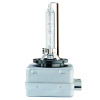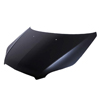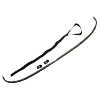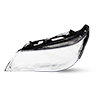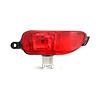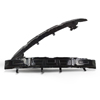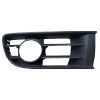
Bumper SUZUKI SWIFT rear and front

Bumper SUZUKI SWIFT models at best prices
- Swift III
- Suzuki Swift Mk3 Bumper 02/2005 - ... Car body type: Hatchback
- Swift IV
- Suzuki Swift Mk4 Bumper 10/2010 - ... Car body type: Hatchback
- Swift V
- Suzuki Swift AZ Bumper 01/2017 - ... Car body type: Hatchback
- Swift II
- Suzuki Swift mk2 Bumper 03/1989 - 12/2005 Car body type: Hatchback
- Suzuki Swift 2 Bumper parts 03/1989 - 05/2001 Car body type: Saloon
- Swift I
- Swift I Hatchback AA Bumper 10/1983 - 12/1989 Car body type: Hatchback
- Swift VI
- Swift VI AOL Bumper 12/2023 - ... Car body type: Hatchback
- Swift Convertible
- Swift Convertible SF413 Bumper 09/1991 - 10/1996 Car body type: Convertible
Bumper SUZUKI SWIFT: useful information
-
Parts recommended for simultaneous replacement as part of a service kit
- Bonnet
- Impact Absorber, bumper
- Wing fender
- Bumper reinforcement
- Front Cowling
- Spotlight Set
- Bumper grill
- Radiator Grille
- Headlight Trim
- Headlight
- Frame, headlight
- Wheel arch liner
- Daytime Running Light
- Fog Light
- Engine radiator
- Air conditioning condenser
- Minimum price £ 33,00
- Maximum price £ 425,00
Catalogue of manufacturers: Bumpers SUZUKI SWIFT
Bumpers SUZUKI SWIFT and other car parts Body
Do bumpers for Suzuki Swift differ from each other?
These components vary in design. It depends on the year of production and version of the vehicle. Therefore, prior to buying the item, make sure it fits your vehicle.
Besides, these components are made from different materials such as polypropylene (РР) and ABS. The elements used for customization are made from GRP. They are highly shockproof but often require modifying their fasteners or themselves to be correctly fitted in place. They aren’t always compatible with other car body parts.
Are all bumpers for Suzuki Swift made in the same colour?
As a rule, new components are grey or black. They are pre-treated with primer and prepared for painting. The type of coating and instructions concerning painting are specified by the manufacturer of the car part. Be sure to read this information very carefully before getting down to work.
Can I paint the component myself?
It is better to seek professional help. However, if you have experience in performing this kind of work and all the required tools, you can cope with the task yourself. To do that, take the following steps:
- Rub small defects with 800 grit sandpaper.
- Degrease the surface using a special agent for plastic components.
- Apply two coats of acrylic primer with an interval for them to let them dry.
- Then, rub the bumper with P500-P800 sandpaper soaking it with water from time to time.
- Blow-dry the part with compressed air and degrease it.
- Apply several coats of paint with a paint spray gun, allowing each coat to dry.
- Coat the component with lacquer.
Bumpers from which manufacturers is it better to opt for?
The most reliable and quality products for these vehicles are produced under the following brands: Van Wezel, Blic, Prasco, and Johns.









































